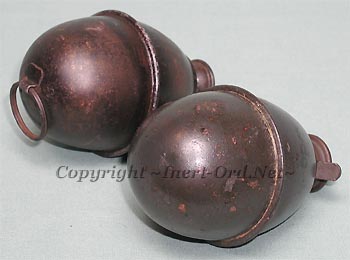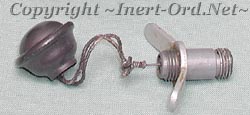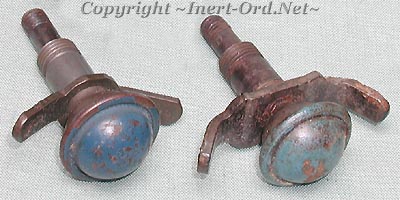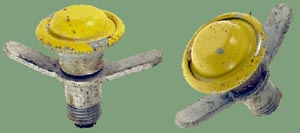Short History
Introduced in 1939 the M39 was a continuation of the idea behind the Mod.1917
Na egg, which was a small grenade, making it easier to carry larger quantities and allowing most personnel to throw it further.
Construction
The grenade is oval shaped, roughly 10cm tall by 6cm in diameter, of light sheet metal construction and
made in two pieces crimped about the middle. There is a fuze well assembly crimped
at the top, sealing the high explosive filler inside.
It is found with dark green (field gray) or tan paint schemes.
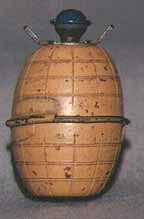
There is no internal fragmentation matrix, but in late 1944
there was a separate fragmentation sleeve developed for it, shown here. (Thanks Darryl- GRM for the picture!)
This consists of two different parts, top and bottom. The locking ring
is attached to one on a pivot, and is rotated and locked in place under a
catch.
A different approach, using two identical half shells, left and right, was used by the Danish on their Mod.23 "egg". (Mod.23 Handgranate 343d) |
|
|
M39 Variations
There are two distinct styles of the M39 grenade body.
The first was a smooth body design. In
May 1942 a modification was introduced consisting of an additional metal
carry ring secured to the bottom for attaching the grenade to an equipment harness.
There is another minor variation as well, having to do with the fuze well
attachment design. Externally, the difference is seen as small change in
the height of the fuze well crimp.
There is also documentation describing a grenade body where the halves are screwed together rather than being crimped.
|


